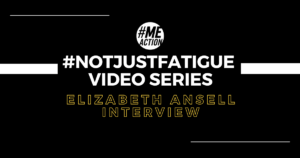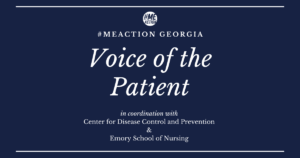Most of the $2.4 million in research the government says is for ME or CFS is spent on research into psychology, exercise or for other conditions such as hepatitis C. No studies funded in a decade.
For Australia’s 94,000 people with ME, or possibly up to 242,000 including CFS, the Australian Department of Health directly funded just three studies into ME or CFS in 16 years, two studies led by psychologists and one on Gulf War veterans. Funding for those studies finished in 2005.
Senator Scott Ludlam asked questions at a Budget Estimates hearing at Parliament House last year after learning how little is known at the diagnostic level and how people were left unassisted to deal with the illness.The senator said Estimates hearings were a good opportunity to question senior health bureaucrats and government representatives face-to-face.
“I looked at Hansard and it appears it has never been raised before. It might as well be invisible,” Ludlam said.
Australia’s National Health and Medical Research Council (NHMRC) took two of the senator’s questions ‘on notice’, as the NHMRC had been unable to answer them at the hearing. The first question on notice was what sort of research is being funded for Myalgic Encephalomyelitis, which may be known as chronic fatigue syndrome.
The NHMRC’s answer:
“Since 2000, the National Health and Medical Research Council (NHMRC) provided funding for Myalgic Encephalomyelitis (ME)/ Chronic Fatigue Syndrome (CFS) research totaling approximately $2.4 million. During that time, 22 applications seeking ME/CFS funding were submitted to NHMRC. Of these, six applications (27 per cent) were awarded funding. The majority of funded research has been/is focused on the clinical diagnosis and treatment of ME/CFS.”
According the NHMRC website, funding in 2000 to 2014 was given to:
- ‘Depression, anxiety and somatic distress: syndromal structure and relationship to onset of clinical disorder’ (or the ‘simplified’ title the researchers offer is “Prediction of episodes of emotional disorder”), led by Prof Peter Lovibond at University of NSW ($224,000)
- ‘A prospective study of the psychiatric & medical characteristics of post-infective fatigue & chronic fatigue syndrome’, (simplified title “Do some chronic fatigue states result directly from infectious illnesses?”), led by Prof Ian Hickie at University of NSW ($500,000)
- ‘Respiratory and neurological health, symptoms and chronic fatigue syndrome in Australian Gulf War veterans’, led by Dr Helen Kelsall at Monash University ($58,000) [according the Australian War Memorial, 1800 Australians were deployed]
- Three five-year fellowships at the University of NSW, two for Prof Andrew Lloyd ($1,065,000) and Assoc Prof Janet Taylor ($559,560)
Talking to researchers about their fellowships from the NHMRC shows a large portion of this funding is actually going to research on conditions other than ME or CFS. Associate Professor Janet Taylor, who received $559,560, said her research is about the role of the nervous system in exercise-related fatigue, she primarily works with healthy volunteers and has “actually done very little work on ME or CFS”. Professor Andrew Lloyd said “ninety percent of my work has nothing to do with CFS, it is mostly hepatitis C,” said.
Other CFS research Lloyd is working on is an online program of graded exercise therapy and cognitive behavior therapy program at the University of NSW’s Fatigue Clinic. Lloyd described the PACE trial, which evaluated these therapies, as having “reasonably solid data”.
Lloyd, who sits on the grant review committees for the NHMRC, also suggested the government should fund international consortiums doing big studies. “The field needs large-scale, high-level, multi-disciplinary studies. Genes predispose people [to the illness] so the best way is a genome-wide association study, with 5,000 well-characterised group of patients and 5,000 controls.”
After reviewing the NHMRC answer Ludlam said “ME needs much more targeted research to give people guidance on what they have. It is scary to have wide sets of symptoms and it feels like sustained research could help”.
Ludlam also asked, “outside NHMRC grants, is there any Commonwealth support for people with this condition that you are aware?”.
“There is no specific programme in the Department of Health to support people with Myalgic Encephalomyelitis” was the Department of Health’s answer. The written answers to the questions taken on notice are published on the Australian Parliament House website.
Ludlam advised he has followed up with more questions, because ‘it felt like the response raised more questions than it answered.’ Ludlam also pointed out that advocacy groups are stretched and need resources to help patients, to provide education and support to GPs and to help them work with the NHMRC.
When asked for their response, Emerge Australia said they would be advocating for a review of the funding allocation and resourcing, and for the opportunity to discuss opportunities for targeted funding for ME research.
Hopefully, raising these questions about support for patients and the focus of research can change things for the better. As Ludlam says, ‘there is plenty we can do’.






14 thoughts on “Australian Health Dept answers questions on ME”
Another excellent piece, Sasha. Thank you!
This will not be a surprise to anyone either familiar with ME/CFS globally, nor who has looked at the NHMRC grant list information for “ME/CFS”.
I’m so pleased that you were able to find out more about the fellowships. It’s outrageous that the funds were used for non-ME/CFS projects!
Thanks Simone!
It wasn’t until I read the ‘fine print’ and interviewed the fellowship recipients I discovered how little the fellowships contribute to scientific knowledge of CFS, so to say $2.4 million was spent on it is an exaggeration.
Well done Sasha in pulling this story together, and thank you Senator Ludlam for pursuing this issue on behalf of patients and families who suffer daily from being so roundly dismissed or ignored. The Australian government, through the NH&MRC, has a lot to answer for.
Thank you Fiona.
They do have a lot to answer for and I hope this article goes a little way towards changing things, by showing how the money is spent.
So kind, thank you Fiona.
They do have a lot to answer for and I hope this article goes a little way towards changing things, by showing how the money is spent.
progress, however minimal is progress – appreciated
You are right. Nothing will change unless we change it!
Prof Lloyd and Prof Hickie have hijacked ME/CFS research for years putting it in the psychiatric basket. It really annoys me to see them getting funding. They may be saying otherwise but that’s where their loyalties lie
Jude,
Hopefully the NHMRC can see the progress being made overseas, in the US and Norway for example, and give up those out-dated notions.
Thanks for commenting.
Thanks Sasha! Good to know the details of those studies. Thanks to Senator Ludlum for going into bat for us too. This information will be handy as we lobby for change.
I think that this is an inaccurate portrayal of the situation as the NHMRC does not generally direct research, but rather responds to research proposals by investigators. This is set out in a response that I got to an FoI request: https://www.righttoknow.org.au/request/response_to_nicnas_report_on_mcs#incoming-3473 and also in the responses to Senator Ludlam’s questions: http://scott-ludlam.greensmps.org.au/content/estimates/estimates-diagnosis-and-treatment-myalgic-encephalomyelitis-or-chronic-fatigue-syn
Whether the low level of funding for CFS was due to a small number of requests for funding, or due to funding requests not being of sufficient quality was discussed during Senator Ludlam’s questioning, but was not resolved. Either way, if you want research to be funded, you need to make sure that investigators are making high quality requests to the NHMRC.
I also note that during Senator Ludlam’s questioning Dr Southern advised that there had just been a funding round where peak bodies could apply for research funding. Did the peak CFS body in Australia apply for any funding? If not, why not?
Hi Paul,
The article was about the NHMRC’s response to questions on notice (my previous article about the hearing itself is here http://meaction.net/2015/11/16/aust-senator-questions-government-on-lack-of-action-on-me/ )
This article looks at the claim $2.4 million was spent on this, when about half that sum went to fellowships whose main focus was not ME or CFS. It includes information published by the NHMRC and from researchers, so it is not true to say it is inaccurate.
I take on board your suggestion that I look at the research proposals submitted and the reasons why they were rejected. Readers may also want to know how the selected studies and fellowships were chosen. The NHMRC directed me to http://www.nhmrc.gov.au/grants-funding/apply-funding and http://www.nhmrc.gov.au/grants-funding/peer-review
Thank you for reading and commenting.
Sasha,
It may be true that only $2.4 million was allocated to CFS research, but as the reason for this is most likely that researchers either
– didn’t apply for funding, or
– the applications that they did make weren’t of sufficient quality,
that is hardly the NHRMC’s or the Australian Government’s fault. As the article didn’t discuss the NHMRC funding process, this was not made clear to the uninformed reader.
I look forward to the results of your investigation into the applications that were made for funding. If you’re able to show that high quality applications for CFS research were rejected purely because they were investigating CFS you will have a story.
However, I suspect that your efforts would be far more effective getting researchers interested in CFS research, and making sure that they are applying for funding, as well as ensuring that the peak CFS body is applying for funding when the next round of funding is available.
Hi Paul,
You miss the point that claim $2.4 was spent on ME or CFS cannot be true, taking the fellowships into account, it is perhaps under a million dollars.
Are you familiar with Myalgic Encephalomyelitis or Chronic Fatigue Syndrome? May I ask what your interest is and what led you to this article?
Australia has no national body representing patients.
Many patients, friends and family were unaware of how little is done here in Australia so this article gives them information.
This is just one short article in the many I write about Australian and overseas research. Interesting and promising research is being done in Norway (the rituximab trials for example) and the US (at Columbia University and the Open Medicine Foundation particularly). The National Centre for Neuroimmunology at Australia’s Griffith University is also doing interesting small studies.
The USA’s Department of Health commissioned a report from their advisory committee, http://meaction.net/2015/09/21/chronic-fatigue-syndrome-advisory-committee-usa-recommendations/ Do you think the Australian Government could do something similar for patients here?
If you have any suggestions on how we can support Australian researchers and get them involved in Myalgic Encephalomyelitis (not just ‘fatigue’ research), I would be very interested to hear about it. I’d welcome an email or DM via twitter, @sashanimmo.
Thanks Paul.
Comments are closed.